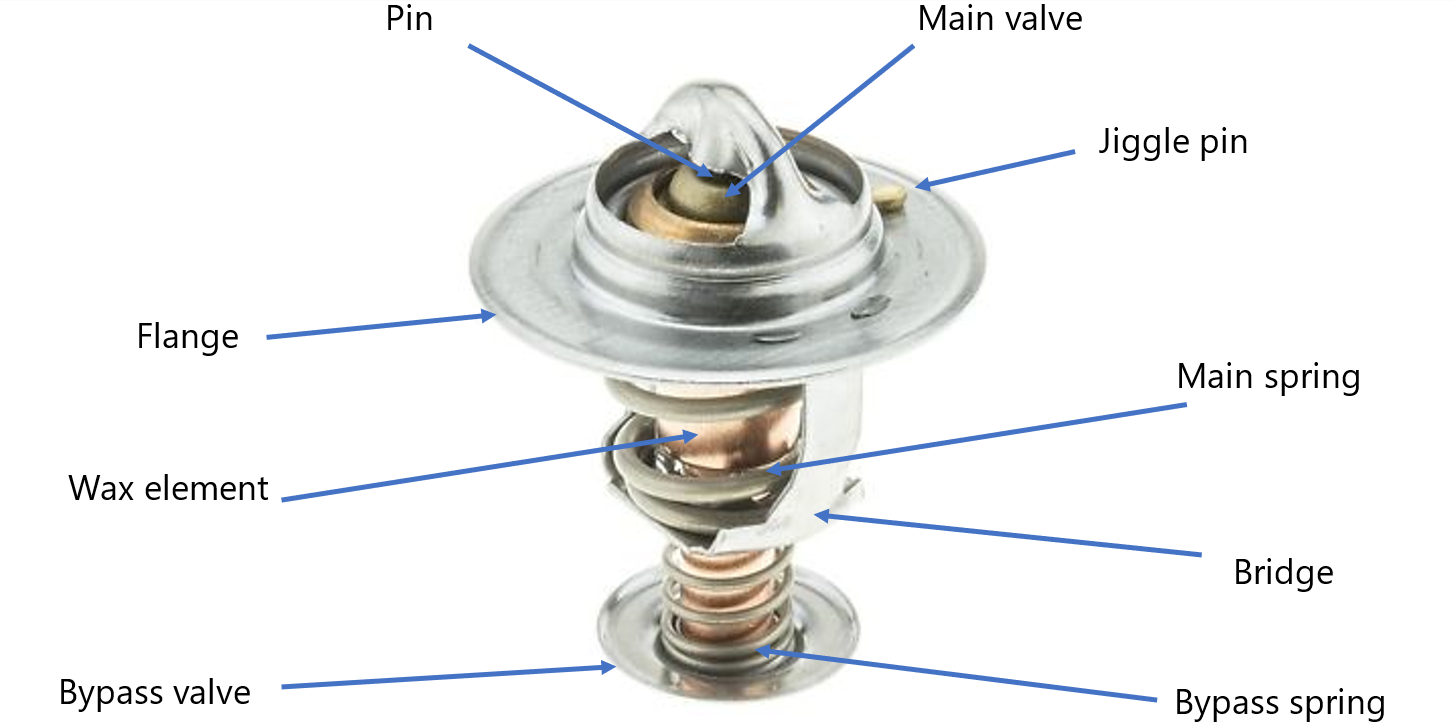Thermostat replacement: jiggle pin and bleeder valve
A thermostat replacement causes air to enter the system, and getting rid of any remaining air pockets afterwards is extremely important. Read on to discover the consequences of insufficient bleeding, the function of the thermostat jiggle pin and its correct 12 o’clock position, and the tools to use with modern engines that have three different cooling systems.
The function of the thermostat
A running engine should, at all times, be kept at the temperature that allows it to work most efficiently. In order to reach or maintain this specific operating temperature, and in order to avoid the temperature fluctuations that are very harmful to the engine, the system needs to be cooled. Therefore, the thermostat works continuously while the car is being driven, regulating the flow of coolant towards the radiator. It is very important to use the appropriate cooling water.
When it is time to replace the thermostat, you need to open the cooling system of the engine. This causes, on the one hand, some of the engine coolant to escape and, on the other, some air to enter the system. To get rid of these air pockets, the cooling system should be completely and carefully bled after the thermostat replacement. For modern engines with three different cooling systems, this requires special diagnostic test tools that may not be present in every mechanic’s shop, but that are nevertheless indispensable. If any air pockets remain, they are bound to interfere with the temperature sensor, so the wrong information ends up being sent to the dashboard, which can eventually result in engine overheating.

Thermostat jiggle valve and bleeder valve
The thermostat jiggle pin is a pin that is located in the small hole in the plate valve of the thermostat and which should always be in 12 o’clock position during installation. It helps bleed the cooling system of trapped air by allowing air to pass into the radiator, after which it can be released from the system. The jiggle pin is a big help in bleeding air when filling an empty cooling system. The hole prevents the formation of an air lock when the valve is closed. Mind that these types of thermostats should therefore always be positioned so that the jiggle pin is located on the top side of the valve. After all, only this twelve o’clock position will allow trapped air to escape.
It should be noted that not all thermostats have a jiggle pin. Some thermostats have a bleeder valve instead, which is located either directly in the thermostat housing or in the coolant hose going to the heat exchanger or to the expansion tank.
Engines with three cooling systems
Lastly, some of today’s modern vehicles have three different cooling systems. With these engines, too, it is vital to bleed the cooling system. After all, air that gets trapped during thermostat replacement is the main cause of thermal problems. For this reason, the diagnostic air bleeding systems or cooling system test and refill tools that are mentioned in the vehicle’s instruction guide should be used to bleed the cooling system.